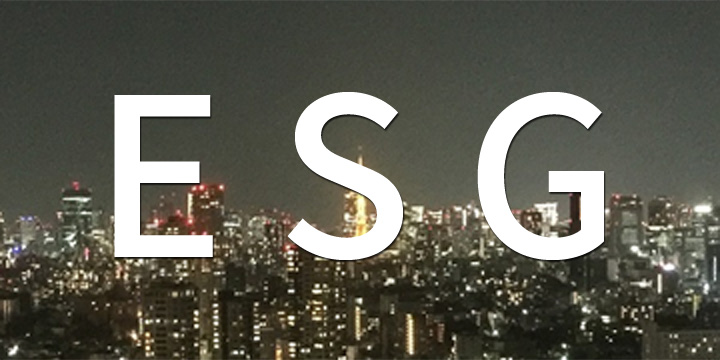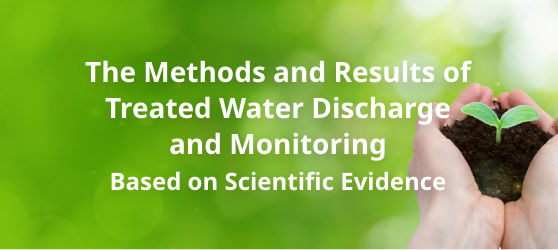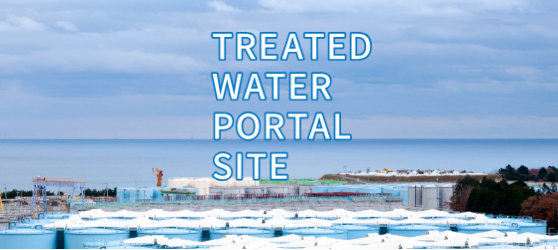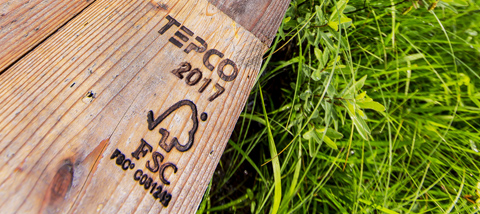Treatment of Contaminated Water
To reduce the risk of radioactive materials in contaminated water, water is first treated with cesium/strontium filtering equipment to remove most of the contamination.
It is then treated in a multi-nuclide removal facility (ALPS), thereby removing most of the remaining radioactive materials except for tritium.
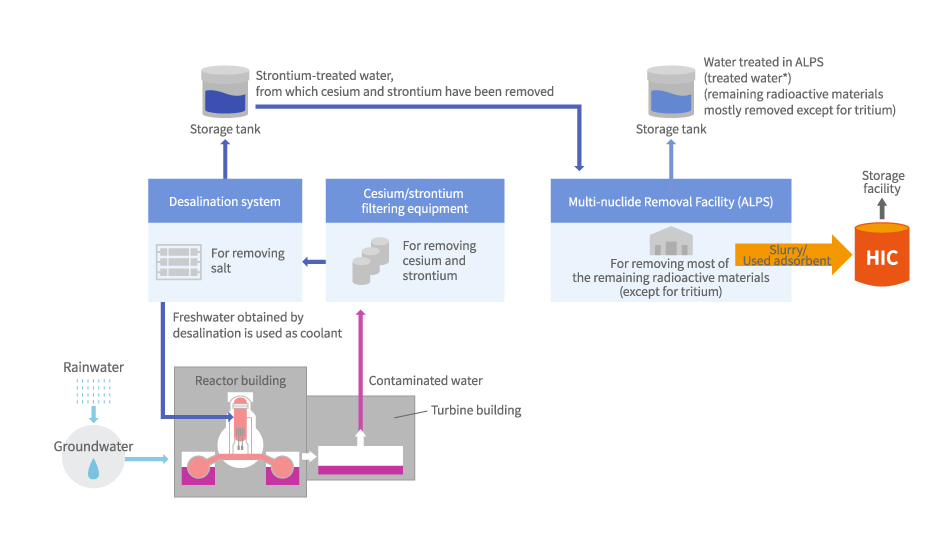
Note on “Water treated with multi-nuclide removal equipment, etc.” is notated. (revised in March, 2020)
- Treated water for which the sum of concentration ratios required by law, with the exception of tritium, is less than 1 is notated as either, “water treated with multi-nuclide removal equipment, etc.” or “treated water”.
- Treated water that has not been completely treated is notated as, “water treated with multi-nuclide removal equipment, etc. (for which the sum of concentration ratios required by law equals or exceeds 1)”.
- When referring to both of the aforementioned types of treated water collectively, the notation, “treated water*” is used.
Treatment of high concentration contaminated water containing strontium (reverse osmosis concentrated saltwater) generated at the time of the accident was completed in 2015.
See the Treated Water Portal Site for data and other information about treated water* (contaminated water after treatment).
For more information on the treatment and storage of waste generated by ALPS, please see, “Plan for the Stabilization and Treatment of Waste generated by Contaminated Water Purification and Treatment Facilities”.
What Is Tritium?
-
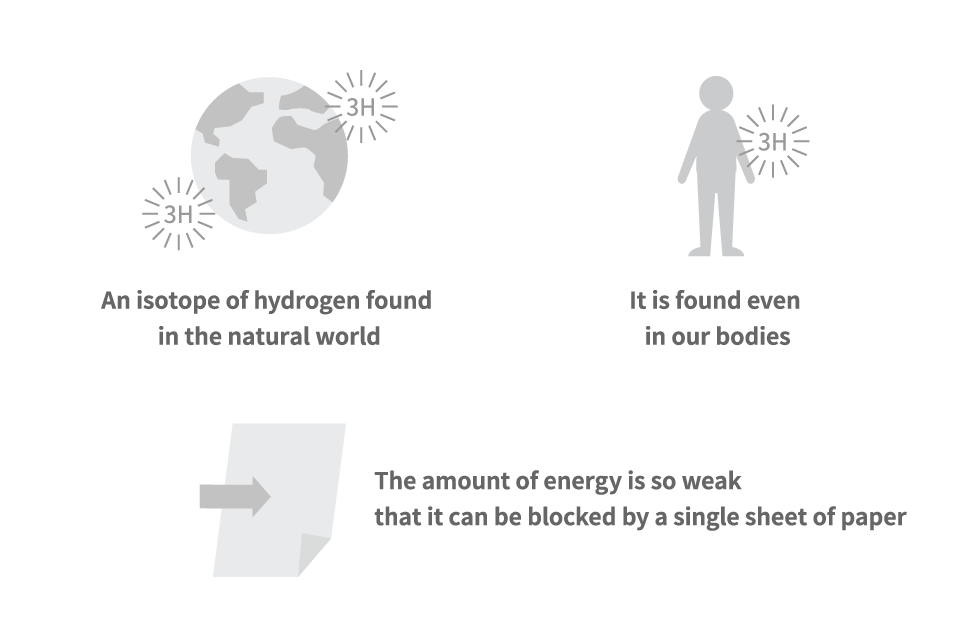
Tritium is also known as hydrogen-3 or 3H, as its nucleus has two neutrons in addition to the proton of ordinary hydrogen. It is similar in nature to hydrogen. Existing mainly as water, it is found not only in the natural world and in tap water but also in our bodies. While it is slightly radioactive as a low-energy beta emitter, the weakness of the energy means it can be blocked by a single sheet of paper. Even though it enters the body through daily activities such as drinking tap water, it is discharged by means of metabolism without being stored or becoming concentrated in the body.
Status of Tank Storage
-
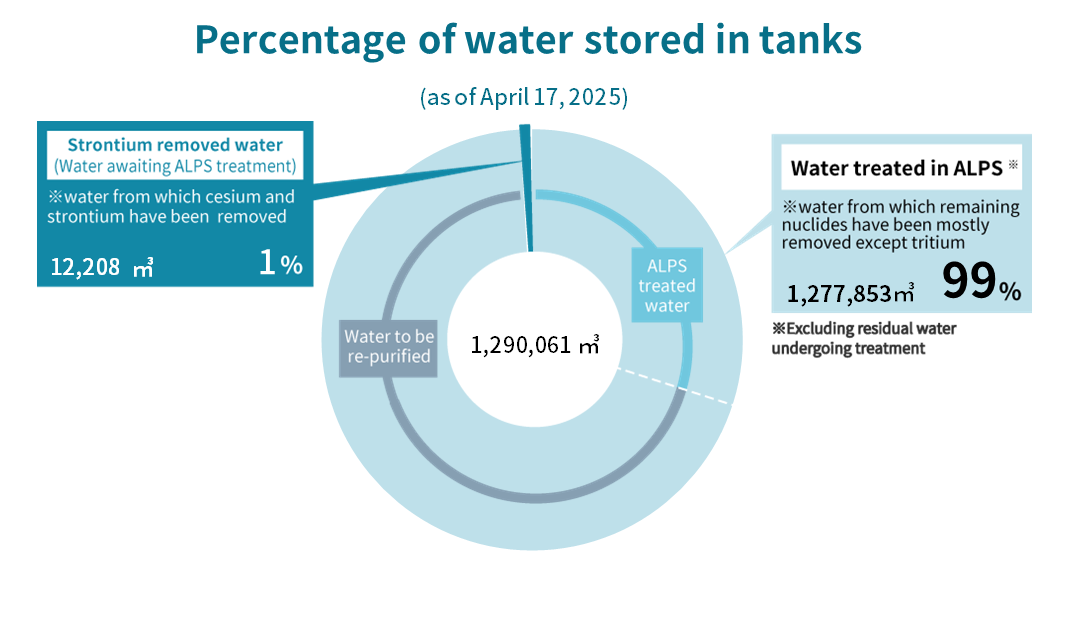
In addition to tanks storing water treated with multi-nuclide removal equipment, etc. (ALPS treated water, etc.), on-site there are also tanks being used to temporarily store strontium-removed water (Sr removed water) that has yet to be treated with multi-nuclide removal equipment (water awaiting ALPS treated). All of these tanks are welded tanks, so the risk of a leak is low, but nonetheless, they are subjected to rotational inspections.
The tanks which were discontinued due to discharge of ALPS treated water into the sea have been dismantled since February 14, 2025.
Area vacated by dismantling will be used systematically as a construction site for facilities required for decommissioning including facilities related to fuel debris retrieval.As of the commencement of ALPS treated water discharge
(August 2023)As of December 11, 2025 <ALPS treated water, etc. stored in tanks> ALPS treated water, etc. 1046 storage tanks 1025 storage tanks (▲21tanks)※1 Completed dismantling 12 out of 21 tanks
on September 3, 2025<Tanks stored water awaiting ALPS treatment> Sr removed water (water to be treated with ALPS) 24 storage tanks 24 storage tanks Total 1070 storage tanks 1049 storage tanks※2 Tank area Area (m2)※3 Status J9
(12 tanks)1,600 Completed dismantling 12
on September 3,2025J8
(9 tanks)1,300 planned to dismantling - ※1
J9 area tanks (12 tanks) have been discontinued on February 13, 2025, J8 area tanks (9 tanks) have been discontinued on November 20, 2025, and the number of tanks stored ALPS treated water, etc. became 1,025.
- ※2
There are 12 storage tanks are being used for fresh water treated with RO facility, 1 tank is being used for concentrated seawater and 13 tanks are being used for concentrated waste liquid.
- ※3
This area is the area inside the tank area, which differs from the area actually required, because required area depends on facilities in the vicinity other than tanks and facilities to be built on the site.
Facilities to be built on the site and their areas will change depending on progress and consideration of decommissioning in the future.
- ※1
※ALPS treated water, etc.
- ・
Treated water for which the sum of concentration ratios required by law, with the exception of tritium, is less than 1 is notated as either, “water treated with multi-nuclide removal equipment, etc.” or “treated water”.
- ・
Treated water that has not been completely treated is notated as, “water treated with multi-nuclide removal equipment, etc. (for which the sum of concentration ratios required by law equals or exceeds 1)”.
- ・
When referring to both of the aforementioned types of treated water collectively, the notation, “treated water” is used.
Information on the discharge of purified water into the sea
On August 22, 2023, the Japanese Government announced its decision to commence the discharge of ALPS treated water into the sea to address the handling of water purified with multi-nuclide removal equipment (ALPS treated water), and on August 24 of the same year, TEPCO commenced the discharge of ALPS treated water into the sea. Prior to each discharge into the sea, TEPCO, Kaken, an external agency entrusted with this task by TEPCO, and the Japan Atomic Energy Agency (JAD a), a third-party assigned to perform this task in accordance with the Japanese Government's Basic Policy, confirmed that Government regulations (except those pertaining to tritium concentrations) for discharge into the environment have been satisfied. Furthermore, during discharge into the sea we continuously confirmed that the concentrations of tritium are below 1,500Bq/liter by diluting the discharged water with large volumes of seawater.









